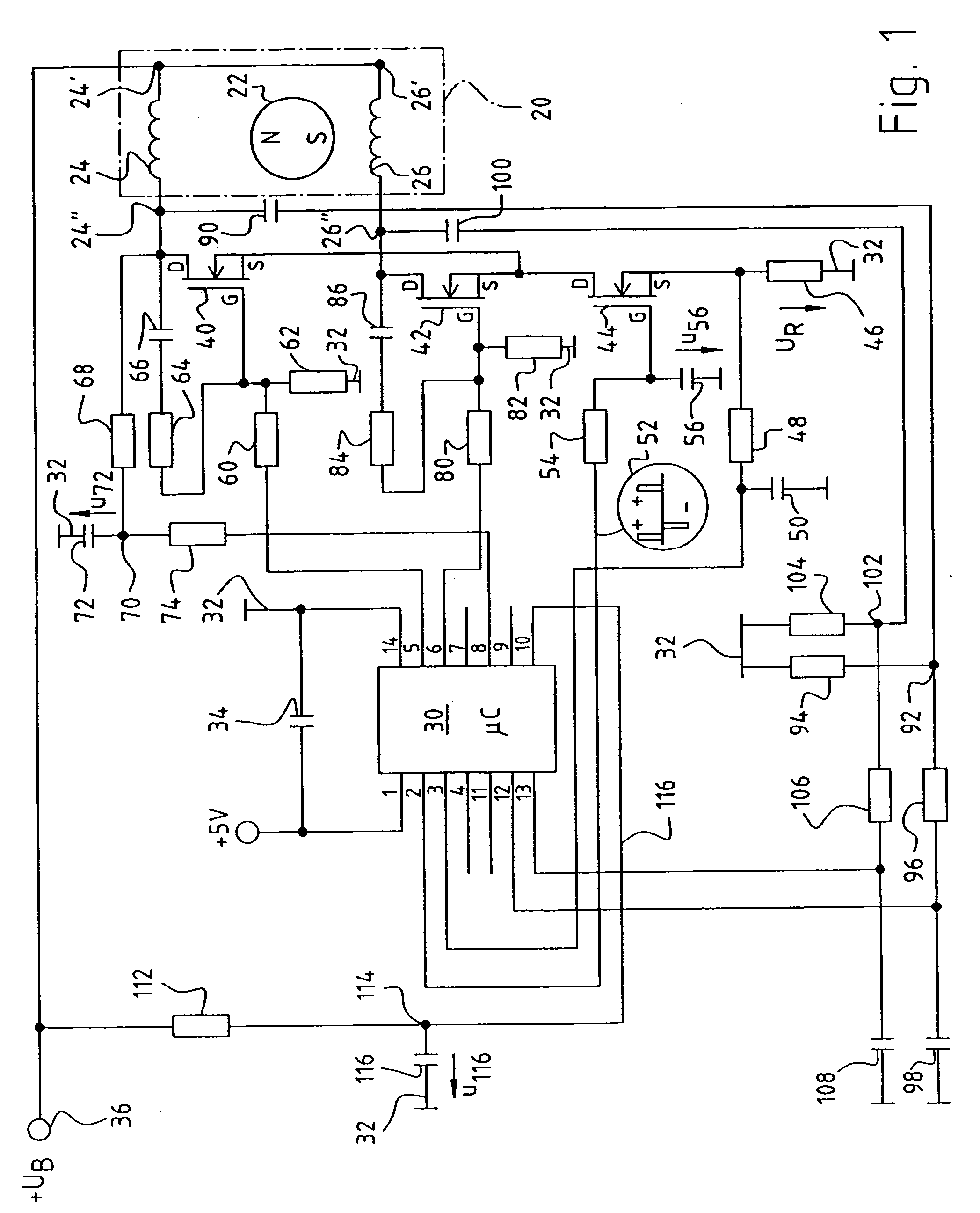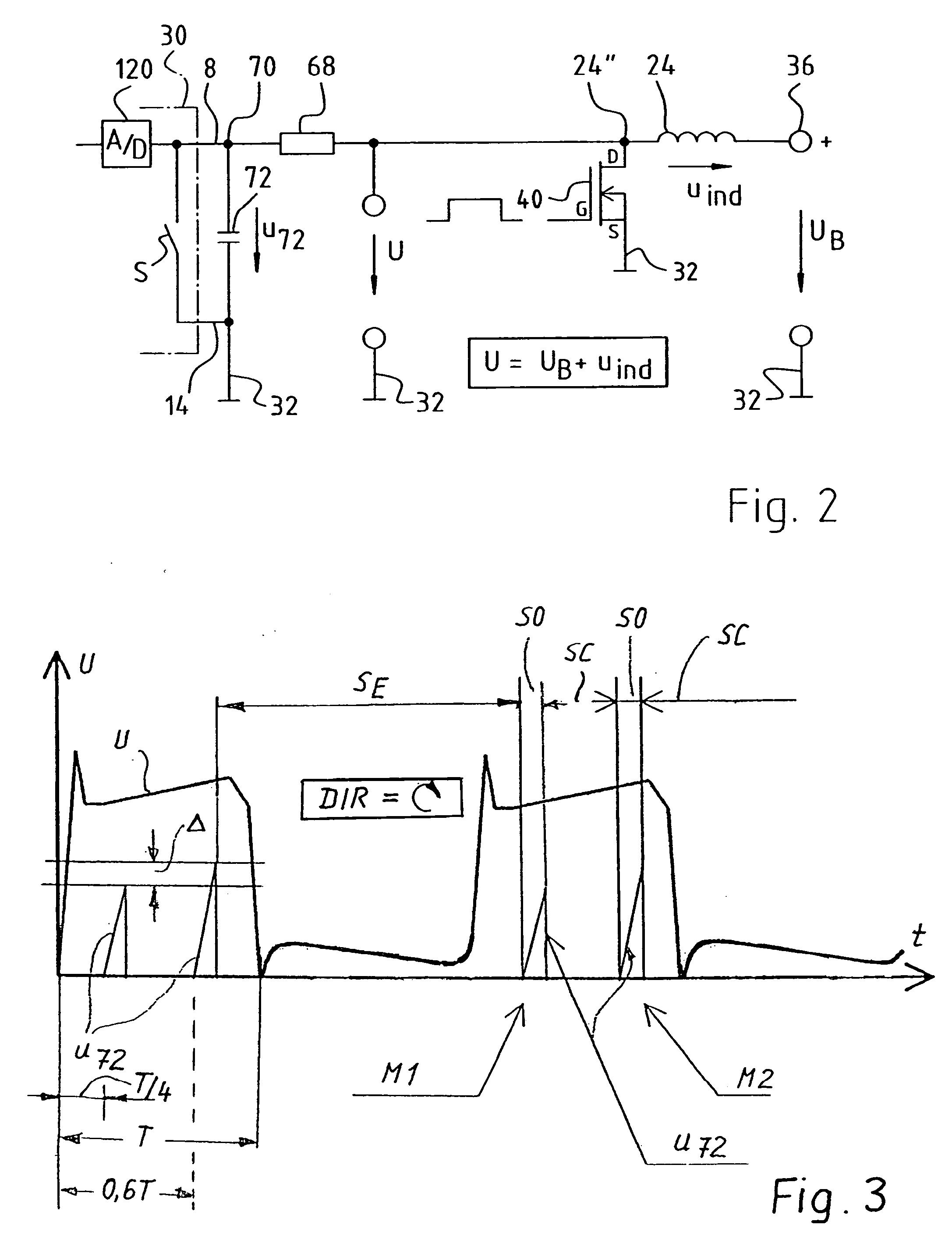Method for sensorless operation of an electronically commutated motor and motor for carrying out such a method
a technology of electronically commutated motors and sensors, which is applied in the direction of dynamo-electric machines, synchronous motor starters, ac motor stoppers, etc., can solve the problems of inability to reliably detect the rotation direction, inconvenient operation, and inability to achieve temporal separation,
- Summary
- Abstract
- Description
- Claims
- Application Information
AI Technical Summary
Benefits of technology
Problems solved by technology
Method used
Image
Examples
Embodiment Construction
[0029]FIG. 1 shows a circuit for operating a so-called two-pulse electronically commutated motor 20 that has a permanent-magnet rotor 22 and a stator winding that is depicted here having two phases 24, 26, which are usually magnetically coupled to one another via the iron of the stator lamination stack (not depicted). A motor of this kind is called “two-pulse” because for each rotor rotation of 360° el., two stator current pulses flow in stator winding 24, 26. In many cases the stator winding can also have only one phase, and then a current pulse flows in it in the one direction during one rotation through 180′ el., and a current pulse flows in the opposite direction during the subsequent rotation through 180′ el. There are many designs for these motors, which are produced in enormous quantities. A typical example is shown in the Müller patents, DE 23 46 380-C2 and corresponding U.S. Pat. No. 4,119,895. Such motors are often implemented as so-called “claw pole” motors, the claw pole...
PUM
 Login to View More
Login to View More Abstract
Description
Claims
Application Information
 Login to View More
Login to View More - R&D
- Intellectual Property
- Life Sciences
- Materials
- Tech Scout
- Unparalleled Data Quality
- Higher Quality Content
- 60% Fewer Hallucinations
Browse by: Latest US Patents, China's latest patents, Technical Efficacy Thesaurus, Application Domain, Technology Topic, Popular Technical Reports.
© 2025 PatSnap. All rights reserved.Legal|Privacy policy|Modern Slavery Act Transparency Statement|Sitemap|About US| Contact US: help@patsnap.com



